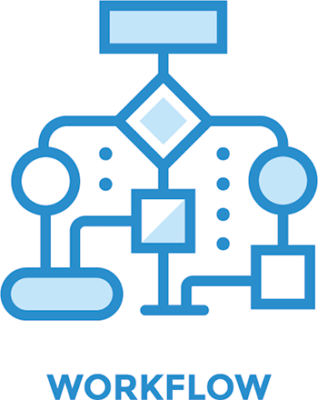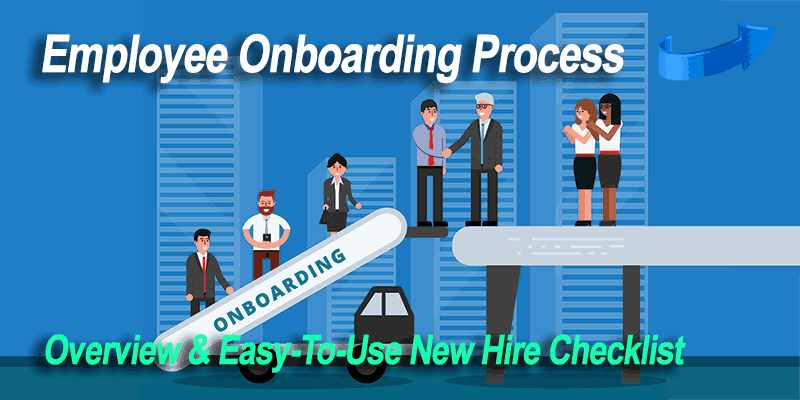A part of the digital workplace for several decades now, many businesses have been guilty of taking the intranet for granted. However, the shift to telecommuting has seen the company intranet working harder than ever. More staff are engaging with and relying on intranet software to get the job done.
In the wake of Covid-19, the intranet has become a critical tool for businesses. That’s the message from research by Ragan Communications. But has the intranet lived up to employees’ expectations? The Ragan survey suggests there is a disconnect between employees’ expectations and the intranet’s reality.
It seems that pre-Covid, the intranet may have been undervalued. Perhaps dismissed as just a dull and boring document library, staff have not fully appreciated the intranet’s value or capabilities. It’s a different story though now as we embark on a new normal. Remote working is here to stay, and so too is the intranet, which has seen a revival. An exciting opportunity now exists for the humble intranet. Many businesses are looking to reinvent the platform as the vibrant, shared hive of activity it can and should be.
 The IT department is traditionally the guardian of the intranet and all things digital. As part of the intranet’s revival, businesses should look to bridge the gap between IT and users. Company-wide collaboration, education, and upskilling will help to leverage the intranet’s full functionality. And here are some ideas to get you started.
The IT department is traditionally the guardian of the intranet and all things digital. As part of the intranet’s revival, businesses should look to bridge the gap between IT and users. Company-wide collaboration, education, and upskilling will help to leverage the intranet’s full functionality. And here are some ideas to get you started.
Resurgence Of The Intranet: The Evidence
Since the start of the coronavirus crisis, the intranet has undoubtedly taken center stage.
However, Ragan’s research highlights some of the intranet’s shortcomings and puts this down to a lack of awareness from users. The survey found that business units are not getting the best out of the intranet. Often employees are simply unaware of the full extent of its capabilities.
On the plus side, survey respondents were positive about the value of the intranet. Seventy percent agreed that the intranet is valuable or very valuable to employees.
However, the survey also found that most intranets are being used as document repositories and employee directories.
There has been little integration with other systems that staff are using daily. For example, only 26 percent of survey respondents said the intranet was integrated with Gmail. And just 23 percent were integrated with Salesforce. And very few intranets were being used to streamline business processes and improve efficiencies.

“These variances indicate a need for the IT team to collaborate with HR, and specific business stakeholders to better understand critical employee workflows that the intranet could be the key for integrating and streamlining.” – Evolution of the Intranet Survey 2020, page 10
The findings from the Ragan survey are mirrored in other emerging research. Gartner recently reported on a snap poll which found that 54 percent of HR leaders indicated poor remote work technology or infrastructure was the most significant barrier to effective remote working.
Gallup has confirmed just what an impact the pandemic has had on how we work. The percentage of remote workers in the US jumped from 31 to 62 percent in only three weeks.
And according to another Gartner survey, 74 percent of companies plan a permanent shift to more remote work post-Covid.
Now is the time to ensure your intranet is working for you at the optimum level. And now is the time to confirm it fully satisfies employees’ needs and expectations.
So, what can HR, IT, and business units do to bridge the gap and take full advantage of the intranet’s resurgence?
1. Improved Workflows And Streamlined Processes
The Ragan survey confirms that many staff underestimate the potential of the intranet. The truth is that the intranet can do much more than just document sharing and knowledge management.
Back in the workplace, most businesses are still heavily reliant on paper-based forms and processes. Whether it’s booking a vacation, filing an expenses claim, or logging an IT support query, chances are paper forms are required. Unfortunately, it’s a slow and cumbersome way to get things done. And there’s always the risk of forms getting lost or mislaid and errors creeping in.
Online workflows and streamlined approval processes delivered through the intranet can make a significant difference.
All employees need to do is complete the automated form. And the intranet automatically routes it to the appropriate manager for approval. The intranet’s integrated rules function can even cope with multiple layers of approval. And unlike paper or email, you only need to set it up once in the intranet.
Faster, more accurate, and efficient online workflows will also save you money. Reduced printing and paper costs, plus the potential savings in staff time, all add up. And don’t forget to factor in the time and effort that goes into sorting out mistakes and issues.
But the real advantage is that all staff have anytime, anywhere, anyplace access. So, whether employees are working remotely or in the office, the online process is readily accessible.
The intranet makes it easy to automate all your paper and email approval processes. It only takes a few minutes to set up an online version using the intranet’s fully customizable forms builder.
And it means staff members can get more done and with less hassle. At the same time, the company benefits from reduced costs and increased productivity. And you will also be improving your green credentials by doing your bit for the environment.
2. More Effective Onboarding
Always a critical process, employee onboarding has taken on a new dimension in Covid-19 lockdowns. Traditionally onboarding involves a whirlwind of meet and greets with key personnel and a whistlestop tour of the workplace. New hires are then despatched to get on with it, usually with an encyclopedia’s worth of reading material.
In the new normal world of remote working, however, that’s no longer possible. Remote onboarding is now in order. But the intranet has the potential to still make it a rewarding experience for the new staff member.
And from a company perspective, online onboarding ensures the recruit hits the ground running even if working from home.
Set up a dedicated onboarding section on the intranet. It can be organized by role, department, or office location – whatever makes sense for you. And then make available all the tools and resources the new team member requires. Complete HR and payroll forms online. And meet colleagues virtually through the staff directory and team chat. Co-workers can even record video welcome messages and share them online with their new colleagues.
Buddy up the staff member with a more experienced employee. The new hire will have lots of questions – even more so than if they were in the office. Having a friendly co-worker to connect with over the team chat could make all the difference. The employee can quickly and easily get answers to all those queries with a simple, instant message.
And why not set up a #newrecruit channel on the team chat so that all staff recently recruited to the business can connect. They can provide mutual support to each other as remote working newbies.
Moreover, rather than passively reading corporate information, the intranet can help to bring it to life. The intranet’s interactive media, such as quizzes and polls, are a more engaging way to test knowledge and understanding.
Plus, the intranet’s automated processes make the task of management much more straightforward. Managers can monitor and track the new employee’s progress with onboarding. This is a handy feature when it comes to auditing and compliance reporting. And it also frees up HR staff from the time-consuming task of paper-based monitoring systems.
For new staff, online onboarding allows them to source information directly without having to annoy co-workers continually. And the intranet’s staff directory means they can identify and connect with internal subject experts within the company.
When devising your employee onboarding process, don’t forget to include the intranet. Make sure that new staff know and understand what the intranet can do. Use role-based training – think how-to videos or webinars – to demonstrate how the intranet supports the employee’s daily work.
3. Better Employee Training And Development
There are two aspects to employee training and development.
The first is the need to ensure employees fully understand the capabilities of the intranet. The results of the Ragan survey suggest this is an issue. Having the right tools and technology in place is fundamental to successful home working. Companies need to embark on a program of upskilling so staff get the best out of the intranet platform.
The second aspect is the delivery and monitoring of employees’ training and development. For the foreseeable future, professional development will need to be done remotely. The intranet’s wide range of tools and media makes it the perfect vehicle for online learning. Take your pick from the following options:
Knowledge-sharing blogs
- Quizzes and surveys
- How-to videos
- Webinars
- Podcasts
- Wikis
- Distance learning platforms.
Interactive and engaging, these tools are available anytime and anywhere through the intranet. They are an excellent choice for remote workers that are also combining caring responsibilities. Staff have the freedom to complete their training at a time that fits in with their home lives.
Intranet-based online training is also a great solution for managers. Automating training modules through the intranet means managers can more easily track progress. As the employee completes each module, the intranet automatically alerts the manager. Thus, the manager retains oversight of the whole team’s progress with user reports. And when compared to the paper-based systems of old, intranets are far more reliable and accurate.
4. Create New Connections Between IT And Business Units
All too often, IT provides a reactive service to business units. Usually, they are only called in to deal with a hardware or software problem. Finding pathways for IT to stay connected to business units will be essential in a remote-working world.
Ragan’s survey clearly shows that IT departments have become disconnected from the rest of the business. And this is reflected in how the intranet is being used.
To revitalize the intranet, companies need to create new pathways and connections. Shadowing and mentoring arrangements are one way to do this. Some businesses have introduced ride-along partnerships. For example, an IT developer might spend time shadowing the finance manager’s work. Or, a programmer could join a company-wide team looking at the employee experience. Virtual roadshows are another possibility. For example, workers could join together in a webinar to find out about a technical topic. Or employees can tune in for a specialized IT demo that showcases how technology can support day-to-day work.
These kinds of initiatives promote an ongoing dialogue between IT professionals and the rest of the business. And it ensures IT retains a sense of what’s important to staff in their daily work and how technology can help.
The Resurgence Of The Intranet
The sometimes underestimated intranet platform is now back in business. Remote working has moved the intranet into the spotlight. Far from being a dull document library, intranets have much to offer the digital workplace. However, employees may not be aware of the full extent of their capabilities.
IT, HR, and business unit leaders need to work together to ensure the intranet meets all staff’s needs and expectations. Streamlined workflows, more efficient processes, and successful remote working are the rewards on offer.
Get started today. Contact us at MyHub intranet to discover more with a free demo or 14-day trial.




 Knowledge-sharing blogs
Knowledge-sharing blogs




0 Comments